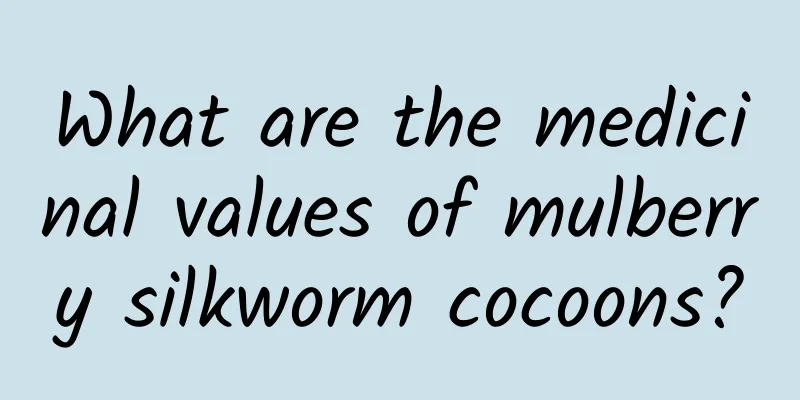The efficacy and function of large species of Lobelia

|
Large-type Lobelia is one of the common traditional Chinese medicines in our country. The medicinal history of large-type Lobelia is very long. Many ancient medical books have records of large-type Lobelia. Large-type Lobelia has good edible value and medicinal value. Let’s take a look. [Other names] Lobelia, wild indigo, ear-piercing grass, partial pole grass, Jiangnan General, white amaranth [Source] Medicinal material source: the root or whole herb of Lobelia jiangnanensis of the Campanulaceae family. [Original form] Lobelia striata is a perennial grass that can reach 180cm in height. Stems erect, glabrous or with very short oblate stalks. The hairy leaves are alternate; the petioles are up to 4 cm long and winged on both sides; the leaf blades are spirally arranged, and the lower ones are caducous; ovate-elliptical to ovate-lanceolate, up to 17 cm long and 7 cm wide, gradually pointed at the apex, gradually narrowing to a petiole at the base, and the margins are irregularly serrated or wavy and finely toothed. The raceme is terminal, 20-50cm long, the inflorescence axis is glabrous or with very short soft hairs; the bracts are ovate-lanceolate, the lobes are linear-lanceolate, 8-12mm long, with small teeth on the edges; the corolla is purple-red or reddish purple, 1.8-2.5(-2.8)cm long, nearly two-lipped, the lobes of the upper lip are linear, the lobes of the lower lip are oblong or lanceolate-elliptic, the midrib is obvious, glabrous or with fine hairs, and with soft hairs below the throat; the stamens are united into a tube above the base. The capsule is spherical, 6-10mm in diameter, with the base often facing away from the inflorescence axis, glabrous or with fine hairs. Seeds yellowish brown, slightly compressed. Flowering and fruiting period is August to October. [Habitat distribution] Ecological environment: Grown in relatively shady and moist places beside mountain forests and ditches below 2300m above sea level [Chemical composition] The whole plant of Lobelia jiangnanensis contains the bioalkalis norlelobanidine, norlobelanine, lobelanidine, norlobelanidine and lelobanonoline; it also contains triterpenoids: β-amyrin palmitate and β-sitosterol. 【Nature and flavor】 Spicy; sweet; neutral; slightly toxic 【Entry into Meridians】 Enters the lung and kidney meridians 【Functions and indications】Promotes lung function and resolves phlegm; clears away heat and detoxifies; promotes diuresis and reduces swelling. Mainly used for cough with sputum, edema, carbuncle, lower limb ulcer, snake and insect bites [Usage and Dosage] For oral use: decocted in water, 3-9g. For external use: Take appropriate amount of fresh product and mash it for application. 【Excerpt】 Chinese Materia Medica Above, we introduced the large species of Lobelia and its characteristics. We can know that the large species of Lobelia has very good efficacy and functions, and has played a therapeutic and auxiliary therapeutic role in many diseases. I hope this will be helpful to everyone’s health. |
<<: The efficacy and function of large goose intestines
>>: The efficacy and function of the yellow grass
Recommend
Loving beauty has risks. Can manicures cause cancer?
"Golden phoenix flowers bloom more brightly,...
The efficacy and function of Xinjiang Polygala
As the pressure of modern life increases, more an...
The efficacy and function of Phellodendron chinense
Traditional Chinese medicine is very helpful in t...
How many steps are needed to create a person?
“ A mad scientist collected bones, viscera and va...
Level 3 emergency response initiated! Heavy rain + thunderstorm + strong wind! These areas should be on guard →
The Central Meteorological Observatory continued ...
Who is not suitable to eat Panax notoginseng powder?
Panax notoginseng powder has many functions. It i...
What are the effects of Chuanlian?
Coptis chinensis is a perennial evergreen herb of...
China’s silver shortage is very serious!
In the eyes of modern people, "bank" is...
The efficacy and function of chicken intestine grass
As a very common Chinese medicinal material in da...
February 2022 "Science" Rumors List: The colder the weather during the Winter Olympics, the better? Can black sesame pills prevent hair loss?
The list of "scientific" rumors for Feb...
The efficacy and function of June
Junehe is a very common medicinal material in lif...
ROTH MKM: 2023 Millennial Survey
ROTH MKM, a full-service investment bank focused ...
Which Chinese medicines cannot be taken together?
Chinese medicine is not taken alone. Each patch o...
Soak cold rice in hot water. I don’t recommend you eat this bowl of food from the movie “Fanhua” every day!
Have you been watching the hit drama "Fang H...
"Low-sugar" mooncakes cause diarrhea? Thanks for the invitation! The culprit turned out to be this
Expert of this article: Pa Lize, chief physician ...









![The efficacy and function of Feilaihe [picture]](/upload/images/67ca5d729b5f5.webp)